Introduction
The need for which the users of desktop computers desire to increase their cycle timeframe and often end up replacing parts comes as a challenge. Whether it is increasing the capacity of the processor, their ability to use several applications at the same time, or simply increasing the performance of the computer as a whole, the ultimate aim in most cases is simply to have a better and more efficient machine fitted on the desk. In most cases, this gets them thinking of replacing their already existing desktop components, such as RAM, storage, or even graphics cards. However, in the race for enhancement, a lot of people do not pay attention to a game-changing difference—mini PCs.
Minicomputers are powerful systems in small packages that pose serious competition to the traditional desktop computing system, providing the “best desktop replacement” solution. Sufficiently potent compact PCs that provide superior power without the added weight are perfect for users who wish to upgrade their computing activities. Mini PCs are capable of performing most tasks as standard desktop PCs and are more space-efficient, thus eliminating the need for a conventional desktop upgrade.
A mini desktop experience is what will be best in such instances: compact in size, economizing space without compromising the quality of work. If you are about to embark on a desktop PC upgrade, this may now be the ideal time to adjust the way you consider the next step; it could be more meaningful and less fanciful if a mini PC is deployed instead.
Understanding Desktop PC Upgrades
Decoding Desktop PC Upgrades Most desktop PC owners are incentivized to upgrade mainly because of performance and technological developments. Upgrading components becomes a necessity as software is often designed to be more demanding than the previous versions, and it would be the expectation for users to turn to faster processors, for example, in gaming, video editing, or software development. In what is known as a desktop upgrade, the user attempts to improve the performance significantly by a relatively simple intervention—the installation of the new parts inside of an already existing case.
Standard desktop upgrade activities include installing additional RAM, changing the graphic card (GPU), increasing the storage limitations, or changing the processor to one with better speed and multi-tasking capacities. Such upgrades may not only enhance performance but will also help users cope with the current software demands and finally make possible the use of ‘high-performance computing’ for even the most advanced applications.
However, the conventional methods of upgrading desktop systems also have their disadvantages. For starters, the size of the desktop cabinet and its parts may become a hindrance. For example, a user who has limited physical space or is seeking a more neat, well-arranged composition may think large desktop systems are quite bulky. Equally, the expenses of upgrading several parts often accumulate significantly, making it worth considering alternative solutions like mini PCs. For many, these considerations render conventional desktop renewal more desirable, especially from the point of view of its long-term effect.
More so, considering these challenges, it may be appropriate to look for other options, such as mini PCs. These small machines are capable of offering the same or better performance without taking up too much space or incurring too many costs, as is the case with the traditional desktop upgrade.
The Case for Mini PCs
A mini PC is just what it sounds like. A mini PC is a reasonably priced supermini computer with great performance relative to the classical desktop systems. Contrary to the overall small size of mini PCs, they are made to provide high-performance computing and processing that is comparable to that of full-sized desktops. These powerful compact PCs are modernized with high processors, sufficient RAM, and fast storage, which makes them fit for several processing jobs ranging from office performance to gaming and content creation.
On the other hand, several important features can be distinguished when considering compact computers and regular desktop computers. First of all, size is a plus from all angles. Regular desktops are usually heavy and take up large portions of the table due to their big towers and other arranging systems. On the other hand, mini PCs are quite small, about an inch or the size of a thick book or even less, thus helping the users boost their margins and cut down on squabbles around their workstations. This makes mini PCs appealing to people who want performance but in a limited space in such areas.
Performance-wise, mini PCs would also be much more powerful than what their sizes suggest; it is especially true when it comes to web browsing, watching videos, and working on documents. Also, those powerful all-in-one mini PCs can be used for gaming, doing some video editing, and other heavy usage thanks to high-performance Intel core i7, or AMD Ryzen processors.
Although common desktops may provide more space to fit high-end graphics cards and other useful components, minicomputers have extensive usability for many people at an affordable price. Affordable prices of mini desktops are the main reason for their increased popularity, as most people spend a large chunk of their time searching for a desktop that serves them just right. The mini-towers serve that purpose right for them.
In addition to that, mini PCs are also quite user-friendly. They would sometimes come pre-packaged and need almost no configuration out of the box, making them a great option for people who like ready-to-use equipment. Most of them also come with several ports for attaching gadgets, and some support wireless technologies such as Wi-Fi and Bluetooth.
There are also many mini PCs on the market that have been well-reviewed due to the power and flexibility they have. One of these is the Intel NUC (Next Unit of Computing), which is possibly the best-selling computer in minicomputer form. It seems to be a compact unit with a myriad of designs and purposes ranging from a worse-than-build gaming PC to an untouchable blank. Another one is the Apple Mac Mini, making it a popular choice for designers looking for a compact yet capable workstation. Such instances show that mini PCs are a powerful and economical—not to mention portable—replacement for conventional desktops.
Benefits of Upgrading to a Mini PC
Upgrading to mini personal computers possesses many compelling, accessible features, which makes it appropriate for anyone who is longing to improve their computing experience without being confined by classic desktop machines. For instance, one of the prominent advantages of minicomputers is increased performance. These small systems have modern processors along with enough memory, providing computing power capable of performing basic tasks or more complex ones, such as video editing or gaming. These small form-factor computers can perform an impressive amount of operations, surpassing in reliability and performance many out-of-date workstations, which bear greater dimension.
The energy efficiency of mini PCs is another major pro associated with the mini PCs. Ordinary desktop personal computers, in light of their bulky energy-demanding parts, can draw a significant amount of power. This is where mini PCs are built to consume less energy. This serves not only to save the costs incurred in paying for power consumption but also makes mini PCs a preferred option for those people who tend to stay glued to a computer most of the hours available in a day. In other words, this performance does not require any energy wastage, thus making these mini PCs an upgraded option for users wishing to make a switch after considering environmental issues.
The compact dimension of mini PCs is yet another huge plus prevalent in their use, especially for individuals in confined areas/working from home. Mini PCs are small and compact in shape, nearly similar to thin portable laptops that can effortlessly slide into challenging spaces or even be placed at the back of a screen monitor, thus eliminating additional space at the workstation. For example, in the case of mobile work or small home offices where the space tends to be limited, the temptation to fill in the cupboard with such equipment will not be so great. The small footprint allows users to have a clean, clutter-free workspace while still enjoying powerful computing capabilities.
Besides these tangible benefits, mini personal computers can also spare more costs than the conventional upgrades associated with desktops. For instance, the costs of enhancing some parts of a full-sized desktop may escalate very fast, especially due to cases, power supplies, and even cooling systems that one has to buy for a normal upgrade. Mini computers, however, offer superb performance at an affordable level; thus, they are the best desktop replacement for users who want some economical enhancement.
Mini PCs also present exceptional portability, catering to their users who are always moving. Mobile digital professionals or workers who need to operate from more than one place will find it convenient to move with a mini PC as they do not have to worry about its weight while transferring it from home to an office or while on trips. You have the capabilities and versatility of a desktop with a mini PC, minus the sadness of a hefty desktop tower—an option that makes it perfect for anyone who will use it in several places.
In light of all mentioned above, one can understand why people would want to upgrade their computing machines to mini PCs because it proves to be a better option in terms of performance, saving of space, energy usage, affordability, and movability.
How to Choose the Right Mini PC for Your Needs
The appropriate mini PC cannot be picked randomly since there are plenty of things to put into consideration if the mini PC is to satisfy one’s upgrade requirements. After all, whether you need a gaming machine, a work computer, or a simple PC for home, it is important to know the basic specifications.
Processing and Graphics Capabilities: A CPU and GPU are central to any mini PC and hence play a great role in the performance of the mini PC. For users who, for example, wish to play games or edit videos at the highest quality, the GEEKOM Mini IT13 would be the ideal choice. It has the powerful 13th Gen Intel® Core™ i9-13900H or i7-13620H processor. The i9 version is accompanied by Intel® Iris® Xe Graphics, while Intel® UHD Graphics is furnished with the i7 model. Both versions make sure that the users can have smooth multitasking without any lags, which makes them perfect for anybody looking for a compact, power-packed PC.
On the other hand, for users who prefer AMD, the GEEKOM A7 powered by the AMD Ryzen™ 9 7940HS with the integrated AMD Radeon™ Graphics 780M is blisteringly powerful yet efficient. This one will suit any creative and gaming immersion with great-quality graphics and processing.
Memory and Storage: Check if a particular mini shopper offers enough RAM and storage for your kind of work. The GEEKOM A7 can accept up to 64 GB of dual-channel DDR5 5600 MT/s RAM, which is useful for people undertaking many applications at the same time. For storage, there are M.2 2280 PCIe 4.0 ×4 SSDs available, where one can fit in a maximum of 2TB SSD so that files can be stored in plenty and booting is very fast. The GEEKOM Mini IT13 has flexible storage provision, thus allowing users to increase storage capacity if required.
Connectivity and Display Support: Connectivity is an important feature for some users, the GEEKOM Mini IT13 has adequate USB ports, including two USB 4 ports. This enables the users to engage in high computing activities, enabling multiple screens of up to 8K resolution. The GEEKOM A7, on the other hand, offers 2.5G Ethernet, Wi-Fi 6E, and Bluetooth® 5.2 for quick and stable internet and peripherals connections.
Design and Portability: The form factor and design of a mini PC are also important. The GEEKOM A7 is distinguishable with its elegantly simple design and compact slim profile of 0.47L aluminium housing that makes it easy to move around and fit in any workstation without occupying much space.
Practical Tips for Comparison: When putting mini PCs side by side with regular desktops, consider finding those whose features match the core purpose. For instance, a gamer will have to consider more on the GPU and refresh rate, whereas a businessperson will pay attention to the processing power and the number of screens attached. Desktops such as GEEKOM Mini IT13 and GEEKOM A7 not only offer small dimensions but also deliver good performance, making them great replacement units for standard desktops.
To choose the best-fitting mini PC, there is a need to strike a perfect equilibrium between performance, memory, storage, connectivity, and your specific needs to get a powerful compact PC that will integrate easily into your computing life.
Overcoming Common Misconceptions About Mini PCs
Although the demand for mini PCs keeps rising, there are still beliefs and facts that are not true about them. A popular one is that mini PCs are weak and cannot handle load work or gaming. Believe it or not, with the advent of modern technology, it is now possible for high-performance computing to be incorporated into smaller systems known as mini PCs that rival the configuration of a desktop PC.
The GEEKOM Mini IT13 and the GEEKOM A7 are two examples of mini PCs that defy this obsolete belief. The GEEKOM Mini IT13 is distinctive in that there is a 13th Gen Intel® Core™ processor i9-13900H and Intel® Iris® Xe Graphics fitted within it that shows that even the tiniest of devices can perform tasks such as video editing, 3D rendering, and even playing games in full definition. The GEEKOM A7, on the other hand, comes with an AMD Ryzen™ 9 7940HS and an AMD Radeon™ Graphics 780M, again proving that mini PCs can enable high-end performance for both gaming and professional work.
★★★★★ ( 4.9 Based on 80 reviews)
- 13th Gen Intel® Core™ i9-13900H, i7-13620H, i5-13500H
- Intel® Iris® Xe Graphics for i9-13900H, Intel® UHD Graphics for i7-13620H & i5-13500H.
- Comprehensive port selection, including two USB 4 ports.
- Supports up to 8K and quad displays.
- 2.5G Ethernet, Intel® Bluetooth® 5.2 and Wi-Fi 6E.
Also, there is a belief that, as far as mini PCs are concerned, multitasking capabilities or connectivity capabilities are minimal. This is however not true since there is always a model such as Mini IT13 and A7 that has a multitude of USB ports, an Ethernet port, Wi-Fi 6E, Bluetooth® 5.2, and other options, making sure the user has the needed freedom to do anything. Because of these attributes, they are very useful for users who intend to upgrade their desktop PCs or those who want a small but very efficient machine that can replace a desktop computer.
★★★★★ ( 4.9 Based on 45 reviews)
- AMD Ryzen™ 9 7940HS.
- AMD Radeon™ Graphics 780M.
- Dual-channel DDR5 5600MT/s, up to 64GB.
- M.2 2280 PCIe 4.0 ×4 SSD, up to 2TB.
- 2.5G Ethernet, Wi-Fi 6E, Bluetooth® 5.2.
- Stunning minimalistic design. 0.47L aluminium housing.
But more than that, real-world applications also prove how beneficial mini PCs can be in their everyday usage. Mini PCs can very well fulfil the high-performance computing requirement for graphic designers, computer programmers, or teleworkers, and for gamers, even the most intense graphics gameplay runs like a breeze. Mini PCs have all the energy without the confusion, which is what makes them a cost-effective and compact upgrade.
Conclusion
Reviewing everything, there is a Mini PC, which is a modern and great option for desktop PC users thinking of an upgrade. They also embody sufficiently powerful systems in a small, energy-efficient, space-efficient, low-cost package desirable for most users. As such, in place of the usual desktops, these mini devices are in a position to provide great power within a smaller size, cutting across gamers, workers with limited spaces, or those who prefer a setup that is easy to carry around.
The GEEKOM Mini IT13 and GEEKOM A7 are powerful compact desktop PCs that dispel the fallacy of the small PC being low-powered. In terms of performance, whether it is work-related tasks, multitasking, or gaming, mini PCs have shown the ability to perform supremely well.
For those who would like to be adventurous and try another way to improve the way they compute, mini PCs are undoubtedly the best option for replacing a desktop. They have the power, flexibility, and form factor that make them hard to ignore in the current computing environment. Look for and buy a mini PC that will suit your quest to improve your computing experience, and do it.



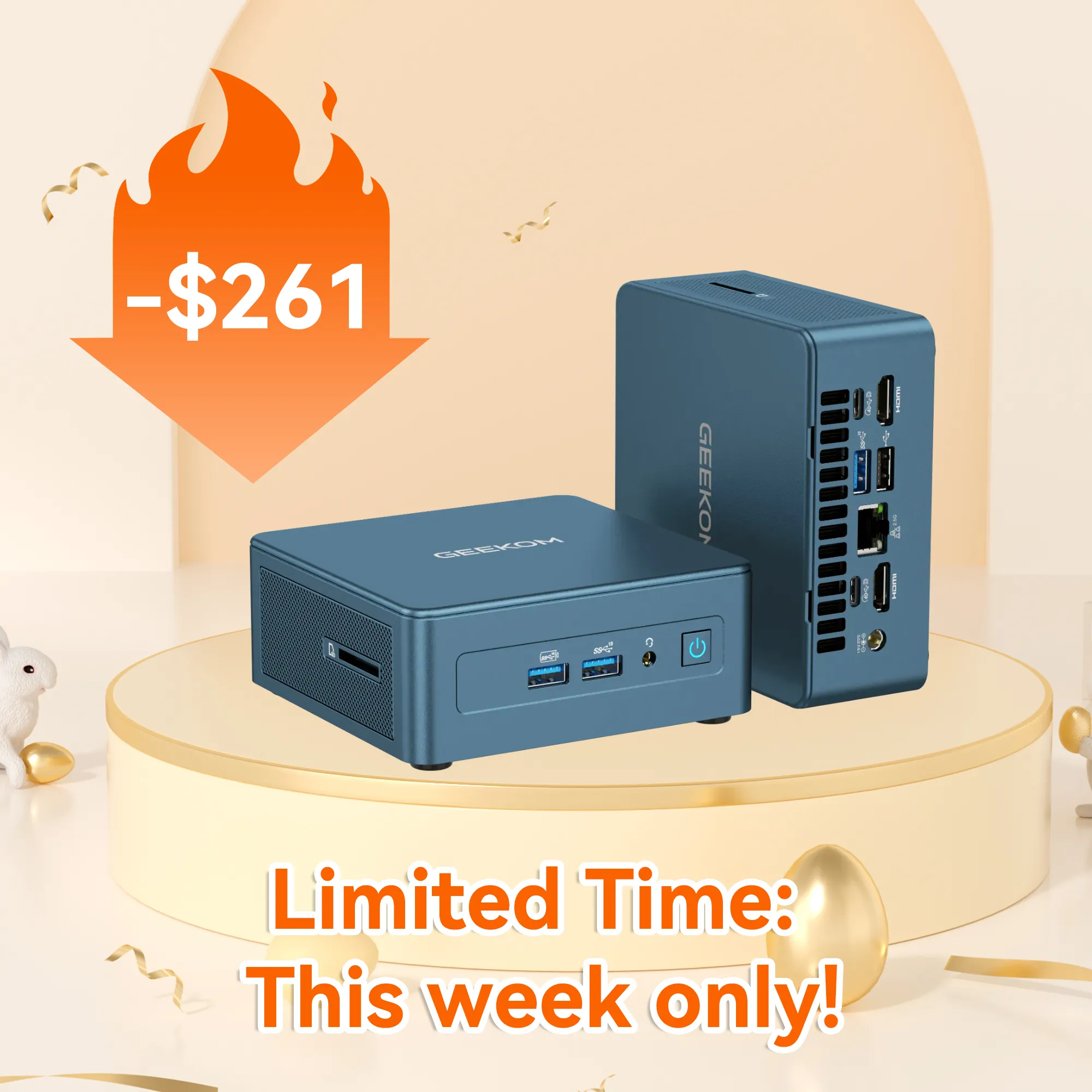
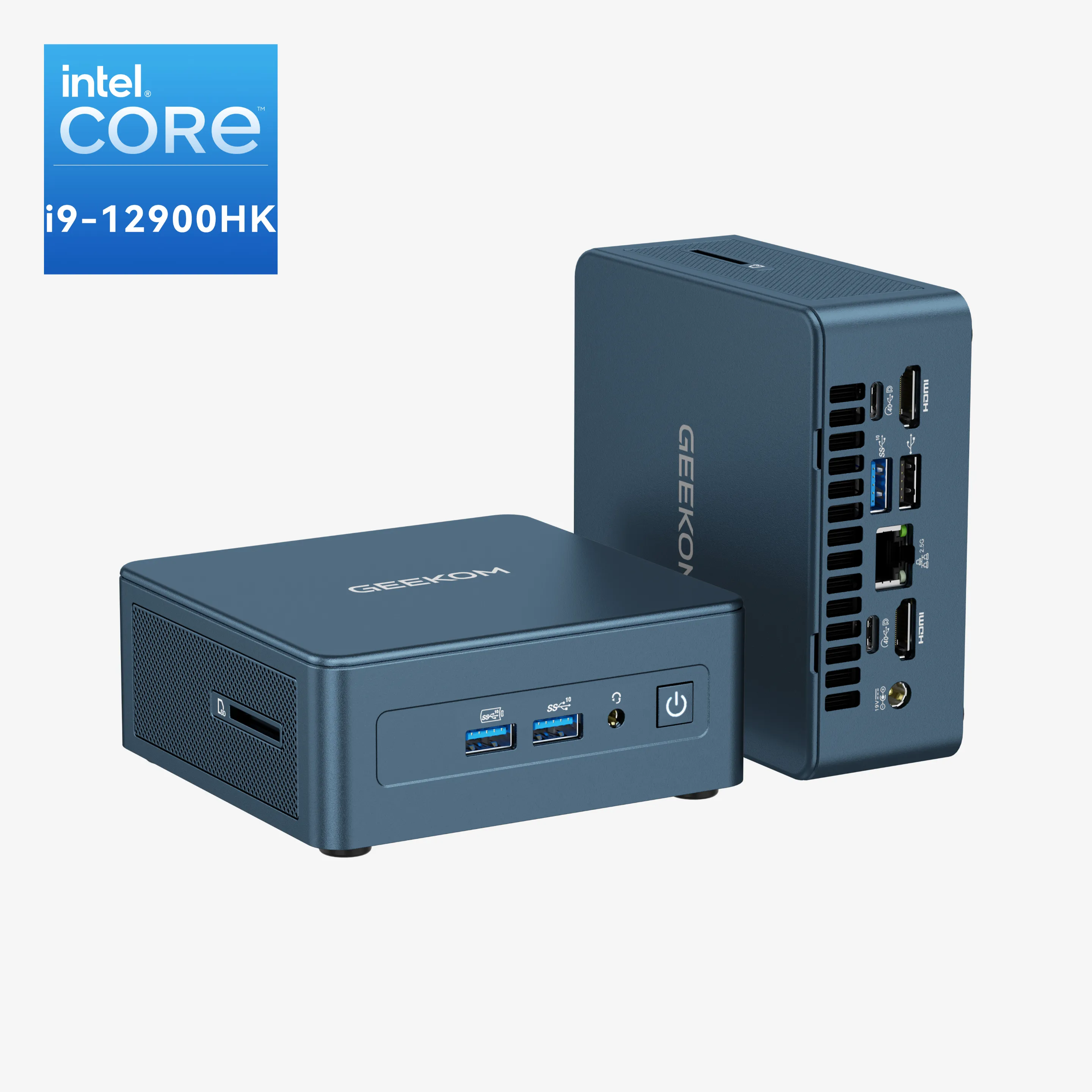
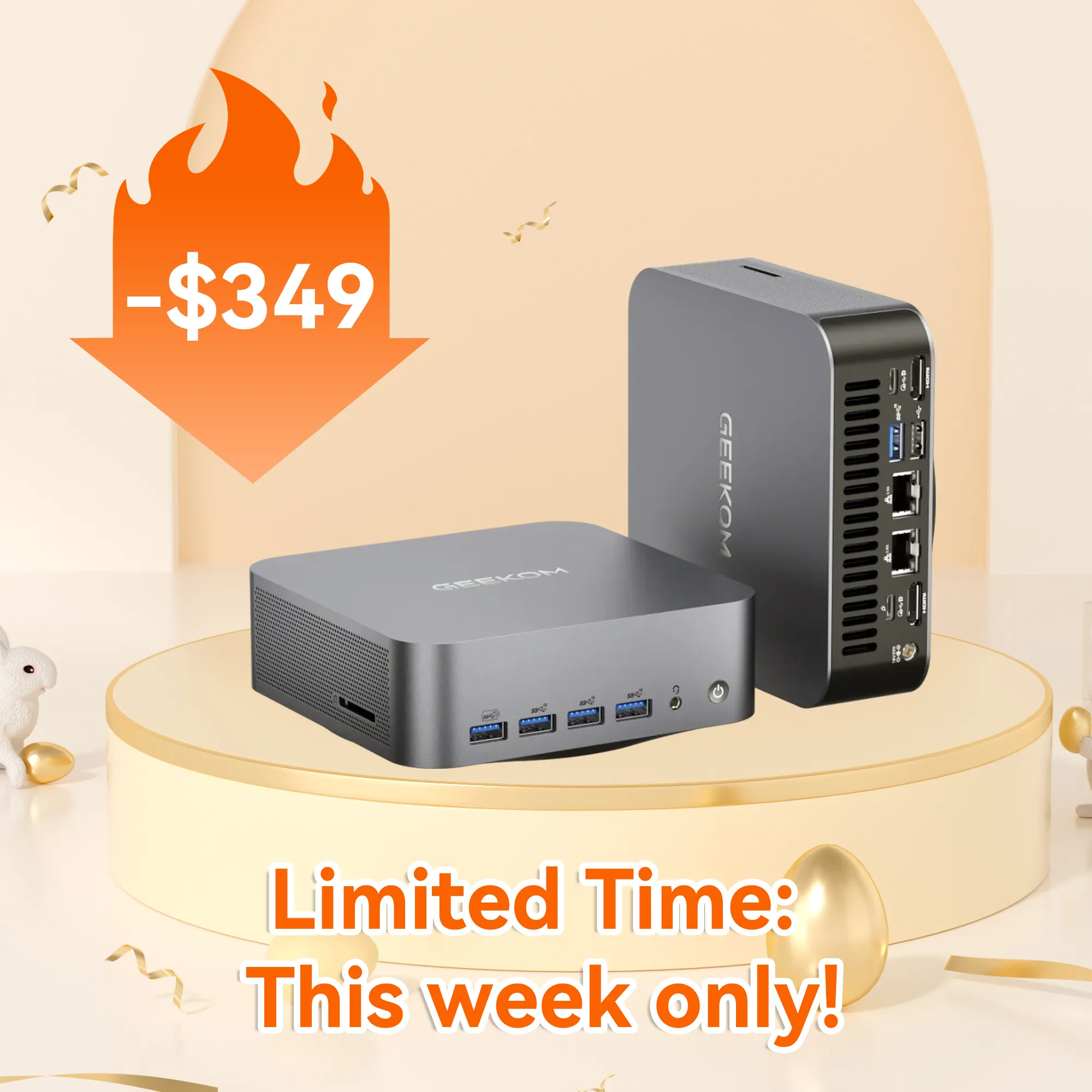
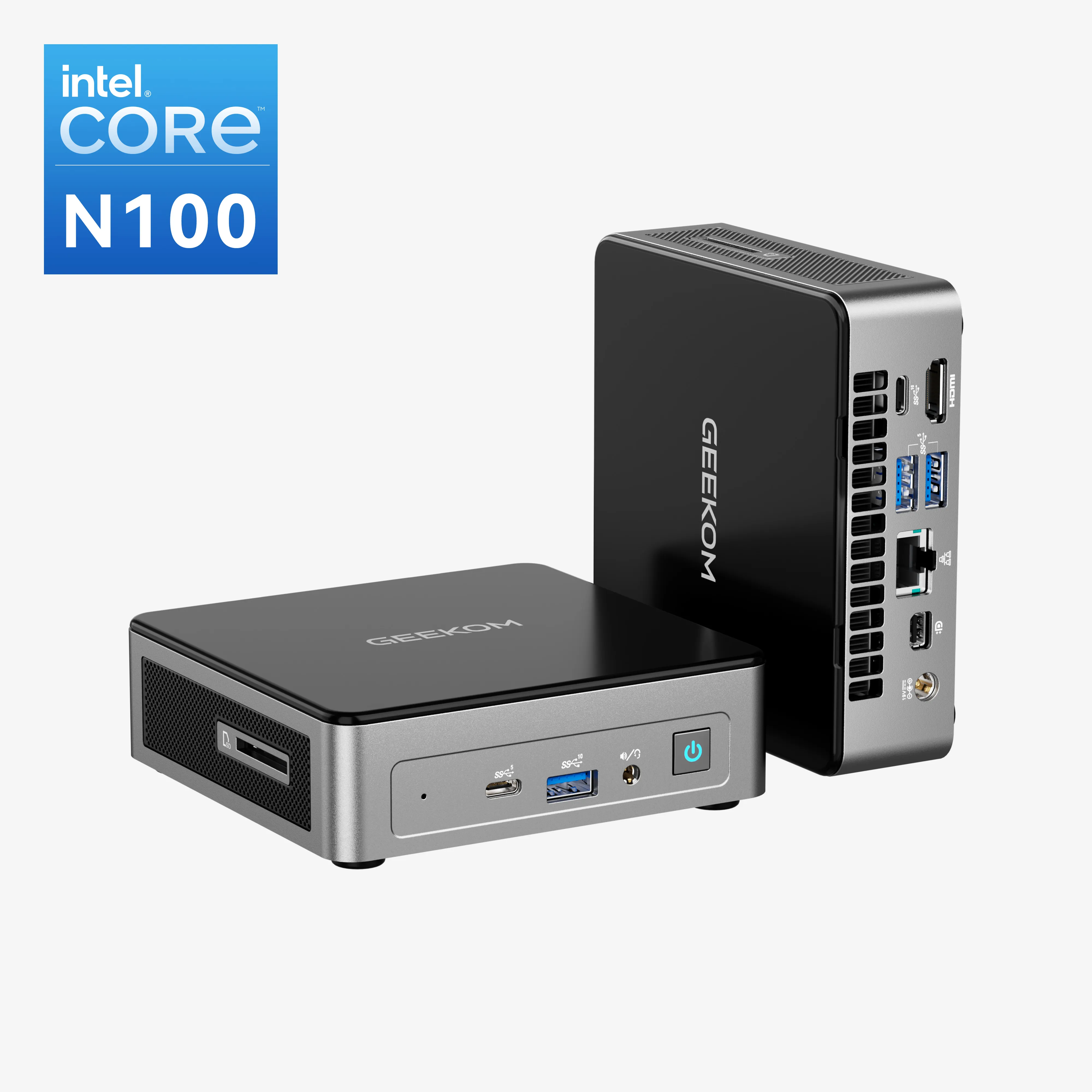
 Flash Sale
Flash Sale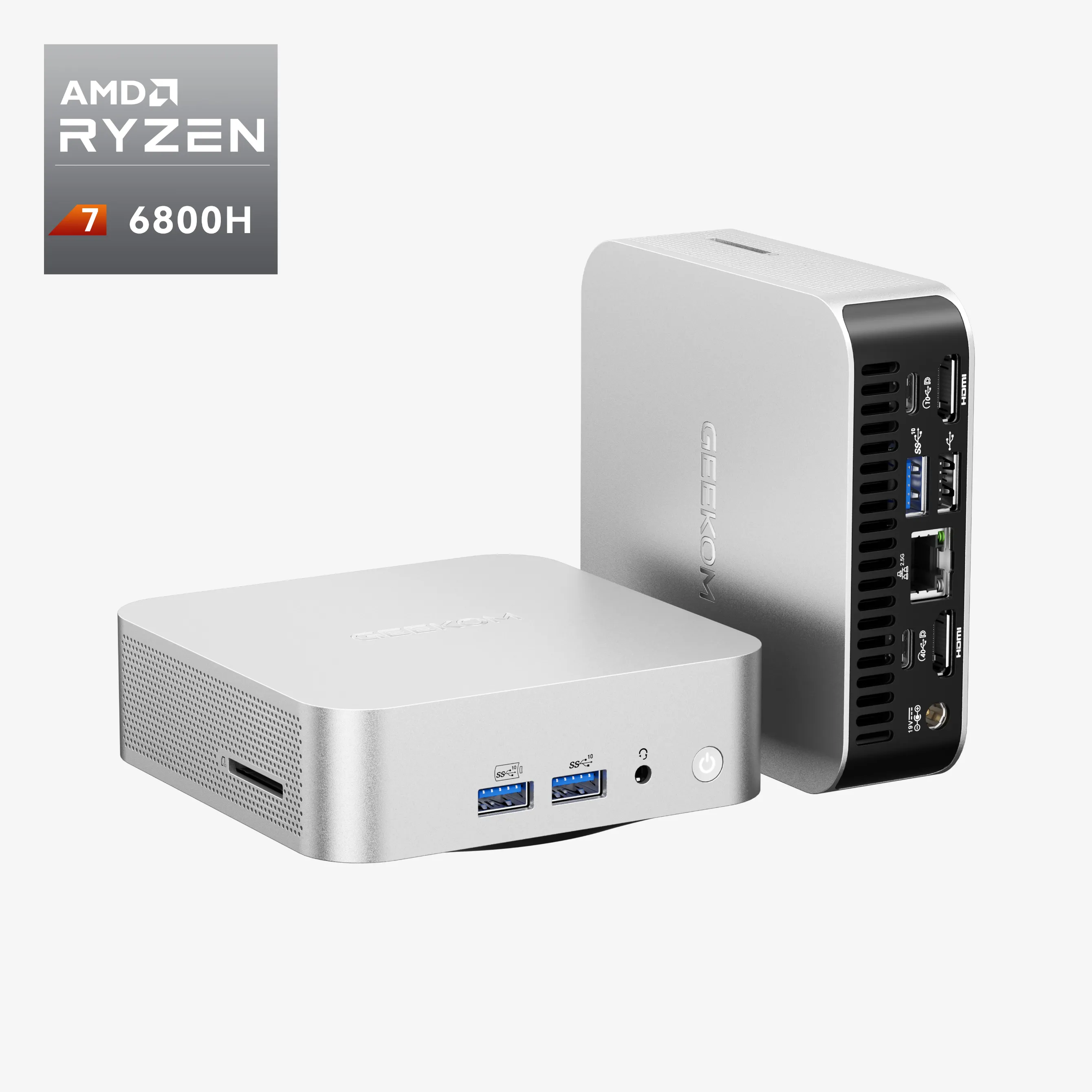
 NEW ARRIVAL
NEW ARRIVAL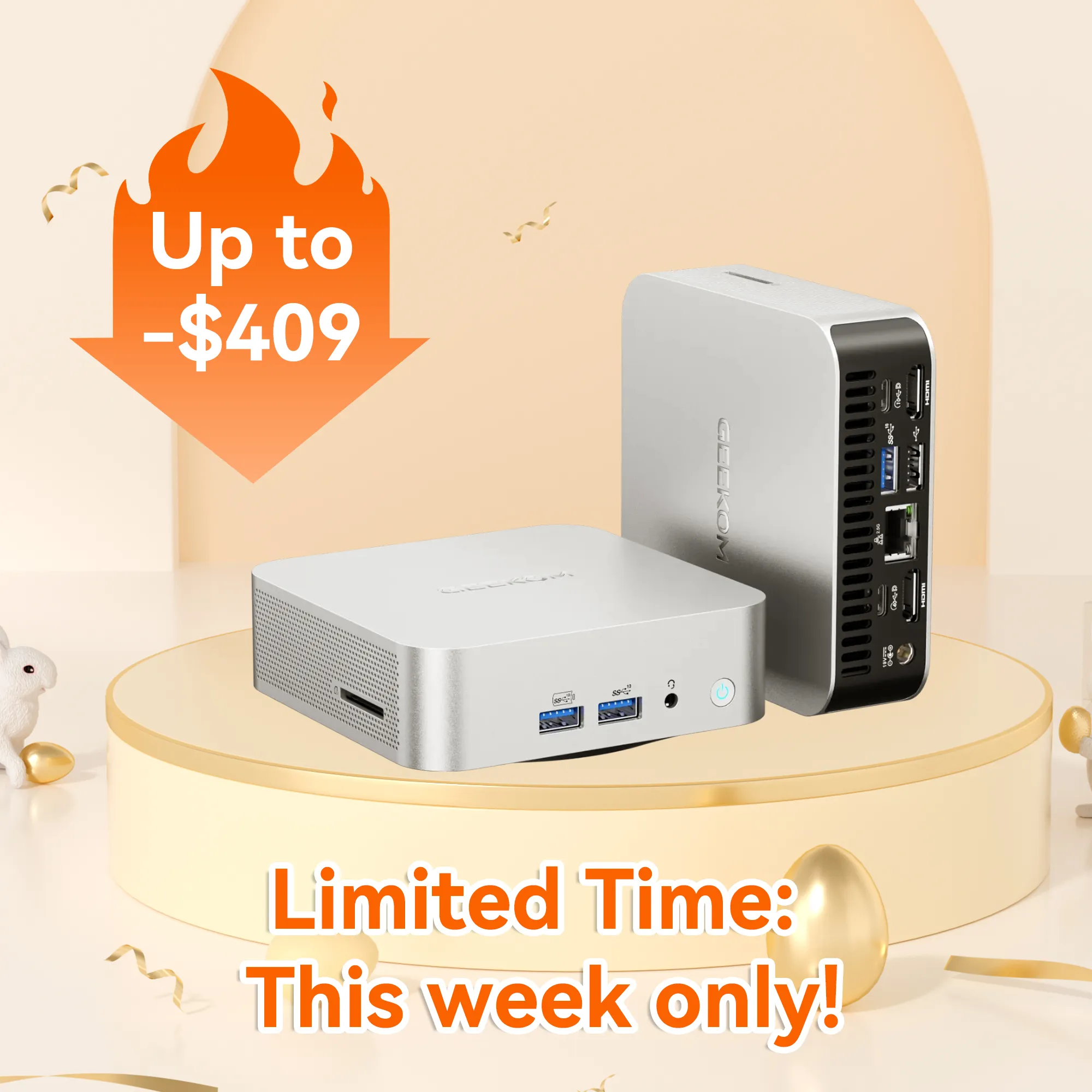
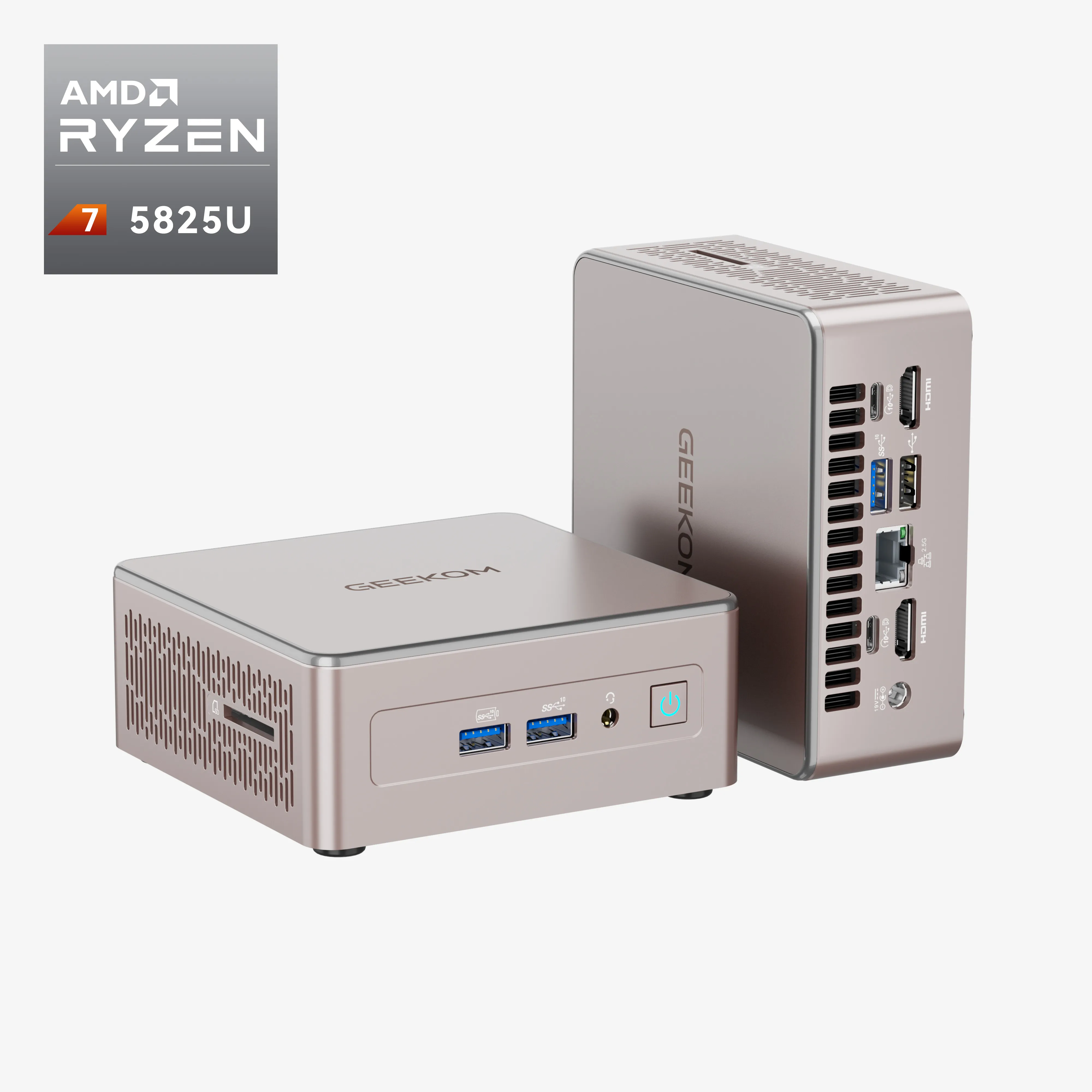
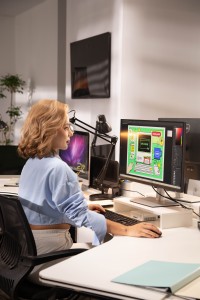
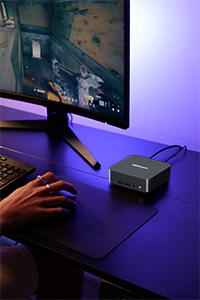
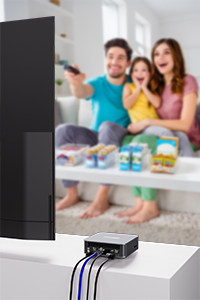
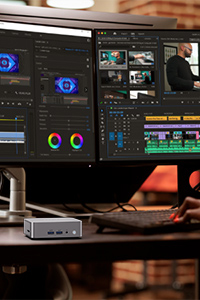

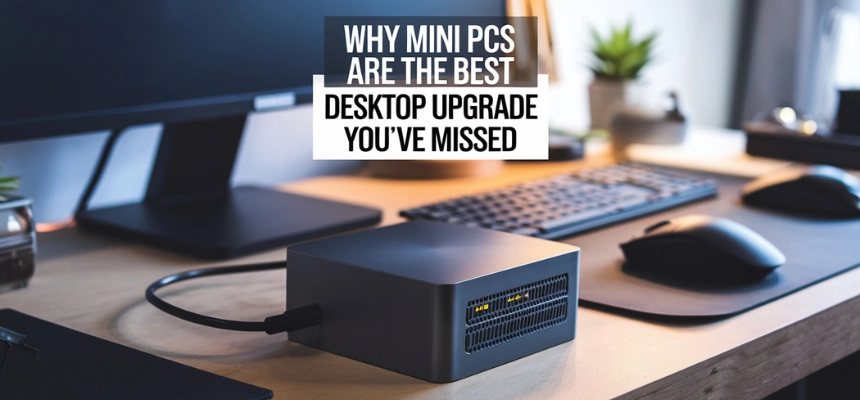
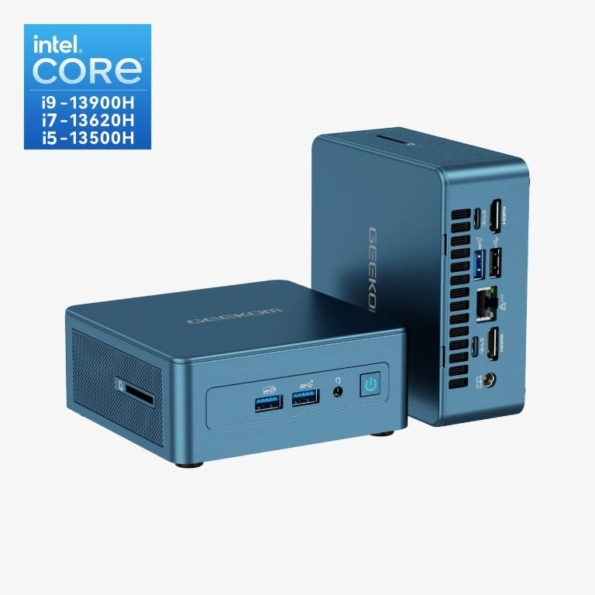
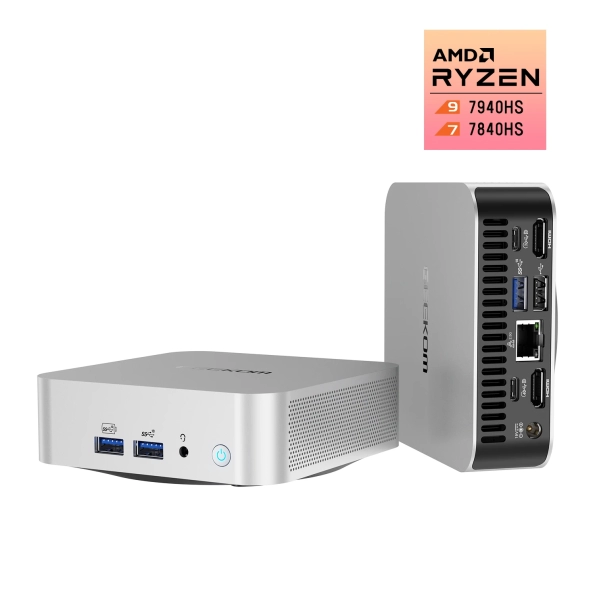



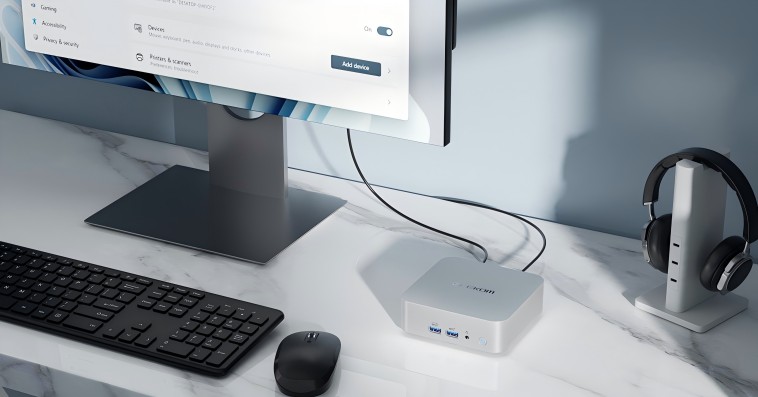
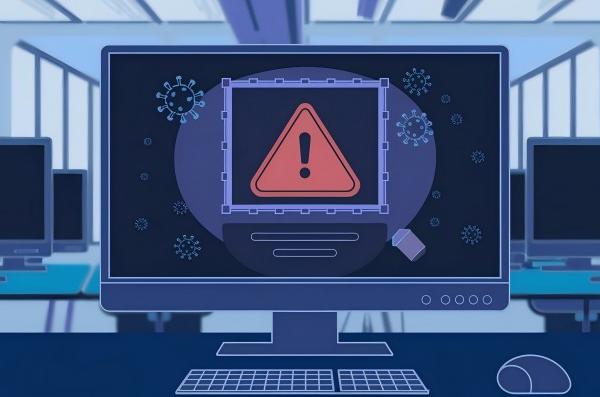
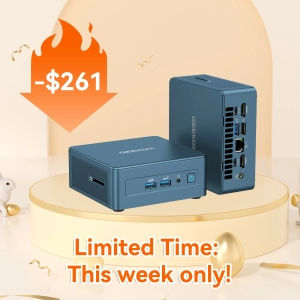
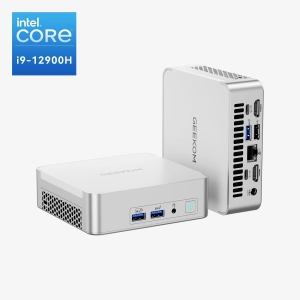
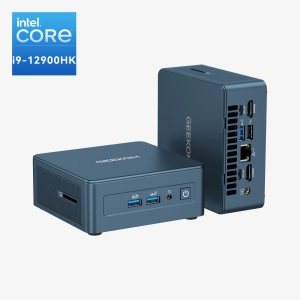
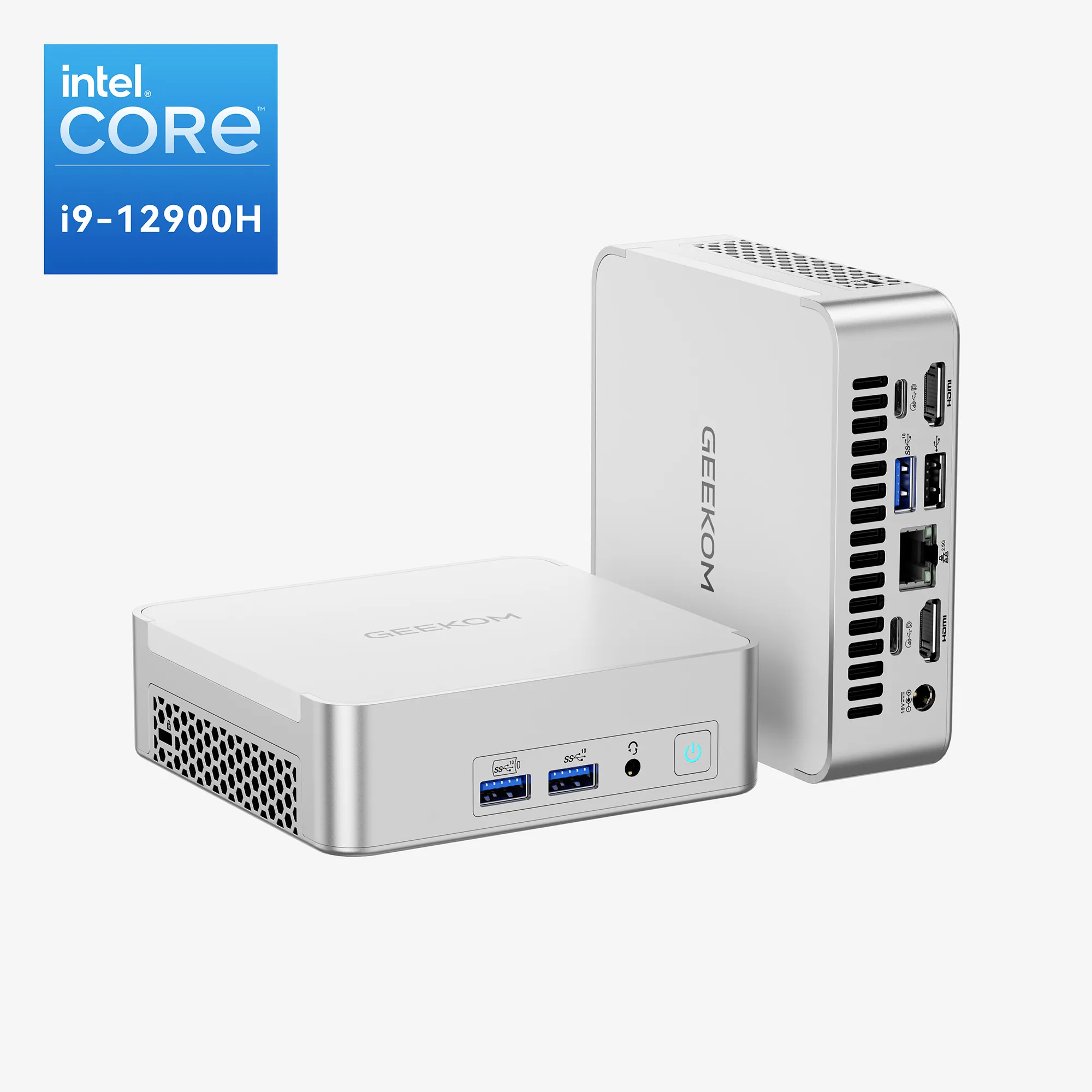
Comments (1)
That’s what I thought recently. I am planning to change my desktop but still not decide what alternative to buy. I will try a mini pc